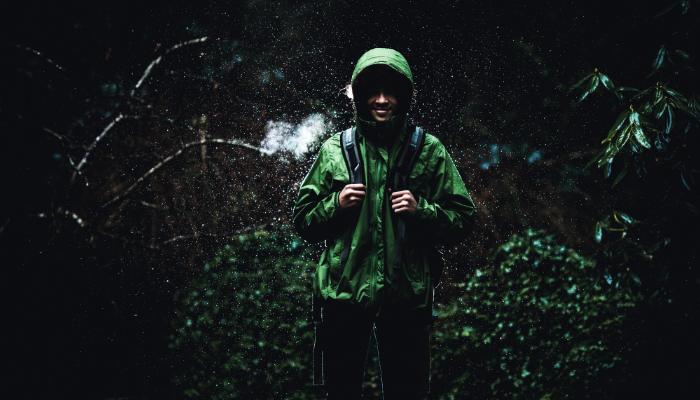Choosing the right backpack can make or break your outdoor adventure. Whether you’re planning a multi-day trek through rugged mountains or a short day hike in a nearby park, the backpack you carry plays a crucial role in your comfort, efficiency, and overall experience.
A common mistake many beginners make is using the same backpack for all hiking situations. While a daypack may be sufficient for short outings, it won’t meet the demands of long-distance hiking where extra storage, durability, and ergonomic support are critical.
This article will give you a comprehensive guide to understanding the key differences between long-distance hiking backpacks and short-day trip backpacks. We’ll break it down into:
-
Capacity and Size Differences
-
Comfort and Ergonomic Design
-
Weight and Load Distribution
-
Durability and Material Choices
-
Features and Compartments
-
Use Cases and Practical Recommendations
By the end, you’ll know exactly what kind of backpack best fits your hiking needs.
Capacity and Size Differences
Day Trip Backpacks (15L – 30L)
-
Best for hikes lasting 2–8 hours.
-
Compact, lightweight, and designed to carry only essentials (water, snacks, jacket, first-aid kit).
-
Typical volume: 15–30 liters.
-
Example: Osprey Daylite Plus (20L).
Long-Distance Hiking Backpacks (40L – 80L+)
-
Intended for multi-day treks or expeditions.
-
Larger capacity for tent, sleeping bag, cooking gear, multiple clothing layers, and food supplies.
-
Typical volume: 40–80 liters, with extended trips requiring 70L+.
-
Example: Gregory Baltoro 65, Deuter Aircontact 70.
💡 Key takeaway: Choose 20–30L for short day hikes, but 50L+ if your adventure lasts several nights.
Comfort and Ergonomic Design
Daypacks
-
Simple shoulder straps, minimal padding.
-
Some models include a thin hip belt, but it’s mostly for stability, not load-bearing.
-
Prioritizes lightness over structure.
Long-Distance Hiking Packs
-
Advanced suspension systems with padded hip belts, sternum straps, and ventilated back panels.
-
Ergonomic adjustment options (torso length, shoulder strap height).
-
Designed for carrying 15–25 kg of gear comfortably.
💡 Rule of thumb: If you’re carrying more than 7–8 kg, you need a structured hiking pack with proper weight distribution.
Weight and Load Distribution
Daypacks
-
Average weight: 0.5–1.2 kg (1–2.5 lbs).
-
The load rests mostly on the shoulders.
-
Best for carrying less than 5–7 kg total gear.
Long-Distance Hiking Backpacks
-
Average weight: 1.8–3.5 kg (4–8 lbs) (before gear).
-
Engineered to transfer 70–80% of weight to the hips, reducing shoulder strain.
-
Allows stable trekking over long distances and steep terrain.
Durability and Material Differences
Daypacks
-
Made with lighter fabrics (nylon, polyester).
-
Water resistance is often minimal.
-
Suitable for occasional use and short trails.
Long-Distance Packs
-
Constructed with reinforced ripstop nylon, Cordura, or Dyneema.
-
Enhanced zippers, buckles, and compression straps.
-
Often treated with PU coating or designed with rain covers.
-
Built to withstand heavy loads, harsh weather, and extended use.
Features and Compartments
Daypacks
-
Hydration reservoir sleeve (2–3L bladder).
-
1–2 compartments + small front pocket.
-
Minimal gear loops and external straps.
Long-Distance Hiking Packs
-
Multiple compartments: top-loading, side access, sleeping bag compartment.
-
External attachment points: trekking poles, ice axe loops, sleeping pad straps.
-
Adjustable lids and expandable collars for extra volume.
-
Integrated rain cover and modular storage (detachable daypack in some models).
💡 Pro Tip: Many modern long-distance packs include a detachable 10–15L mini-daypack for side hikes.
Hydration and Food Storage
-
Daypacks: Designed for short trips, a hydration bladder and a few snack pockets are enough.
-
Long-distance packs: Require storage for water filters, multiple bottles, large food supplies, and cooking gear.
Safety and Emergency Features
-
Daypacks: May have a whistle on the sternum strap and reflective details.
-
Hiking Packs: Often include integrated whistles, reinforced loops for emergency gear, SOS instructions, and higher visibility materials.
Price Range Comparison
-
Daypacks: $40–$120 (budget to premium).
-
Long-Distance Packs: $150–$400+, depending on size and technology.
Practical Scenarios – Which Backpack to Choose?
Scenario 1: Weekend Forest Hike
✅ Daypack (20–25L).
Scenario 2: Overnight Trek in the Alps
✅ Hiking Backpack (50–60L).
Scenario 3: Multi-Day Expedition in Patagonia
✅ Hiking Backpack (70–80L).
Scenario 4: City Day Hike or Sightseeing
✅ Lightweight daypack (15L).
Mistakes to Avoid When Choosing Backpacks
-
Overpacking a Daypack Can cause straps to dig into shoulders.
-
Undersized Pack for Long Trek – Forces you to leave essential gear behind.
-
Ignoring Fit Adjustments – Ill-fitted packs lead to back pain.
-
Choosing Style Over Function – Looks don’t matter if comfort is compromised.
Future Trends in Backpack Design (2025–2030)
-
Lightweight Innovation: Use of Dyneema and carbon fiber frames.
-
Smart Features: Solar charging panels, GPS trackers, and built-in SOS beacons.
-
Eco-Friendly Materials: Recycled fabrics, biodegradable coatings.
-
Customization: Modular backpack systems that adapt for both short and long trips.
Conclusion
The difference between a long-distance hiking backpack and a short-day trip backpack goes far beyond size. It involves:
-
Capacity (20L vs. 50–80L+)
-
Comfort systems (basic straps vs. advanced suspension)
-
Weight handling (5–7 kg vs. 20+ kg loads)
-
Durability and weather protection
-
Specialized features for extended survival
In short:
-
For short day hikes, a light 20–30L daypack is enough.
-
For multi-day treks, invest in a durable, ergonomic 50–80L pack.
💡 Final Tip: Always match your backpack to the duration, terrain, and load of your trip. The right backpack ensures comfort, safety, and a better hiking experience.



